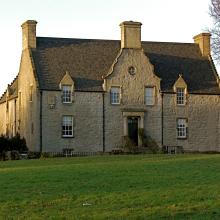
In Issue 205, we dealt with concerns arising from the recent relaxation of planning regulations ('Common sense and/or the lack of it'). Many people fear that the new Householder Permitted Development Rights will lead to piecemeal and ugly 'customisation' of properties which will make it harder to appreciate and protect them in future.
Some of the people on Leith Central Community Council are particularly concerned that this 'could soon have a detrimental effect on the character of Pilrig's Victorian streets'. They are therefore trying to have parts of the old Balfour estate listed as a Conservation Area (CA) in which development would be more strictly controlled.
Provisionally, the area they have in mind includes 'Bonnington School through the northern edge of Pilrig Park to Pilrig House (avoiding all the later buildings), all of Rosebank Cemetery, the Victorian terraced housing on Pilrig Street, Rosslyn Crescent/Rosslyn Street, the older parts of Dryden Street, all of Shrubhill to the boundary of the Leith Conservation Area on Leith Walk, the Shaw's Colonies and Spey Terrace (the older buildings at the Leith Walk end of Pilrig Street are already in the Leith CA) across to Pilrig Cottages and part of Arthur Street, then most of Balfour Street, avoiding the new flats near to Pilrig Park'.
'With 49 listed buildings, some dating from 1638 onwards,' writes Jenny MacKenzie on the Leith Central Community Council website, 'Pilrig contains work by well-known nineteenth-century architects William Burns and Robert Rowand Anderson (later well known for the Scottish National Portrait Gallery and other important Edinburgh buildings). Its layout also reflects a long history as a coherent unit since the proposed conservation area was originally mostly one estate owned by the Balfour family. Robert Louis Stevenson’s grandfather, Lewis Balfour, was born in Pilrig House in 1777. Stevenson mentions the house in two of his novels.'
Those behind the scheme must now convince City of Edinburgh Council that the area merits protection due to its historical and architectural importance. To this end they will complete a written 'Character Appraisal' before making a formal request for CA status in the early autumn. It would then go before the Planning Committee in late autumn, and if approved would be put out for public consultation over the winter.
If you think you could contribute to the Character Appraisal for Pilrig, contact the Convenor of the Leith Central Community Council (LCCC) planning sub-committee Annette O’Carroll or LCCC Secretary Roland Reid.